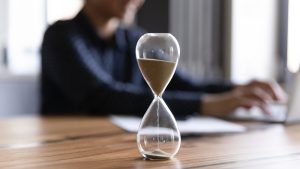Responsible, sustainable, green procurement means selecting products and services that have the least negative impact on the environment as well as the highest positive impact on communities and people. Profit and growth need not be compromised; in many instances it is myth that going green costs more, says Lorraine Jenks, advocate for green procurement in this month’s SmartProcurement.
Everything we use, every day, has an impact on the environment. Everything you buy, eat, drink, drive, wear, use at home or at work has an impact on the environment as well.
Someone has to procure these, or the materials used to make these things.
That person is you.
As a member of the procurement profession, you have the power to help protect the future for your children: you have a power to choose goods and services that are responsible, sustainable, green and ethical.
And it’s much easier than it seems. Start somewhere. It’s better than not starting at all…
It is a simple matter of ticking off some of the following:
Ask yourself, have the creators of this product considered energy alternatives, water saving, waste reduction, air and water pollution, forests, natural resources, transport, soil degradation, toxins, working conditions and animal welfare?
Each product purchased should be selected based on its overall green attributes – its lifecycle analysis – which entails evaluating the environmental impact and social consequences of a product through each stage of its life. Consider (1) where and how raw materials are sourced, (2) the manufacturing process, (3) handling, (4) transport, (5) safety, (6) impact during use and (7) the disposal of the product.
All these aspects must to be taken into account and included in the supplier assessment template of the company’s procurement policy and procedures. Each criterion or key performance area should be weighted to suit the unique needs and aspirations of the company because no two organisations are the same.
Supply chain monitoring
Manufacturers of products should be able to furnish people with information on the level of green compliance at each stage of their supply chain and manufacturing process. They should continue to monitor these for as long as their companies remain preferred suppliers.
For example wood should have an internationally recognised sustainability label, such as a Forest Stewardship Certification. Your supplier should be able to trace the journey of that item right back to the forest where the tree was cut down (forests in Africa are struggling to control illegal logging).
When going out to tender, tenders for green goods and services must stipulate clear eco-standards and specifications, which require a sound understanding of:
- Why it is critical to change
- What must change
- How to change,
- Where to find solutions
When assessing a supplier, begin by checking the overall environmental policy of the company, which should be thoroughly assessed either internally or with the aid of professional auditing companies who will assess energy and water consumption, travel behaviours and waste management – benchmark these, then help to reduce and manage these more efficiently.
The next step is to check the actual product and help the manufacturer define and implement new standards for all aspects of procurement – a sadly neglected, but critical component of going green.
Cost versus price
Going green is not about cost. It is about the price that the future generation will pay for our apathy. It is not about being better than competitors. It is about everyone collaborating to clean up our act, committing to mitigating climate change and prohibiting the degradation of our environment.
Remember this is Africa, so bend the rules and find new ways. We do not need to copy the models from overseas. Unlike other parts of the world, South Africa’s most critical sustainability criteria are, firstly, water security, then job creation, ethical and organic food, energy saving and then the rest, concludes Jenks
For information about procuring green visit www.greenstuff.co.za


























